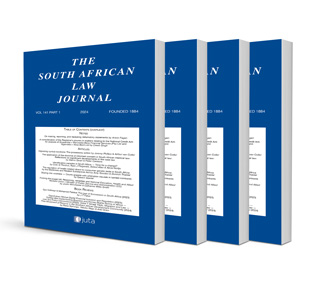Customary international law is law in South Africa — Now what? Analysing the courts’ identification and application of customary international law over the last decade

Customary international law is law in South Africa — Now what? Analysing the courts’ identification and application of customary international law over the last decade
Author: Andreas Coutsoudis
ISSN: 1996-2177
Affiliations: Advocate, KwaZulu-Natal Bar; Honorary Research Fellow, University of KwaZulu-Natal
Source: South African Law Journal, Volume 140 Issue 1, p. 53-94
https://doi.org/10.47348/SALJ/v140/i1a4
Abstract
Customary international law is law in South Africa as much as property law, company law or contract law. It may not be as frequently relevant or applicable as many parts of domestic law. Courts and domestic legal practitioners may not be as familiar with its contours, nuances and methods of identification. But it is precisely for these reasons that it matters more, not less, how courts, legal practitioners and the parties they represent approach it. This article describes and analyses South African courts’ engagement with customary international law, particularly over the last decade. The analysis reveals that important issues of customary international law are determined and applied by South African courts. Thus, customary international law cannot be avoided; nor should it be. However, the analysis also reveals that the courts’ engagement with customary international law would benefit from a more reflective, rigorous and considered approach. Building on the analysis and description of South African courts’ past identification and application of customary international law, the article offers suggestions for how the road ahead ought to be navigated. It is past time for South African courts to give proper consideration as to how, both procedurally and substantively, they and the parties before them ought to approach the identification of customary international law. For customary international law is not some exotic and indeterminate set of rules emanating from another legal system. It is part of South African law. The sooner it is fully treated as such, the better it will be for courts, practitioners, litigants, and international law more generally.